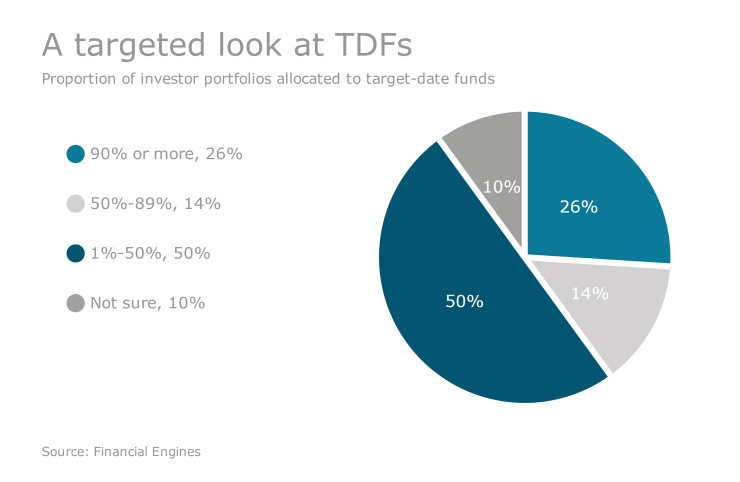Simply having a general idea when a 401(k) participant intends to retire does not provide sufficient information to set an optimum course for an automatically evolving retirement asset allocation, according to Josh Cohen, head of institutional defined contribution for Russell Investments, the global asset management company.
Therein lies the problem with traditional target-date funds, Cohen maintains. While the 401(k) investment provider marketplace is crowded with asset managers anxious to create customized TDFs based on participant demographics at the plan sponsor level, Russell Investments has gone a step further by enabling automated TDF customization at the participant level.

It has been about two years since Russell launched its “adaptive retirement accounts.” And while the service hasn’t yet taken the 401(k) world by storm, Cohen says “we’re on a few platforms, and a few plan sponsors have added it, and we’re in a lot of good discussions” with potential customers.
He describes adaptive retirement accounts as “using technology to continue to evolve the target-date default solution” to address the retirement investment needs of participants who aren’t clones of other plan participants of the same age.
Customization variables
The following data elements – which generally can automatically be extracted from the plan sponsor’s recordkeeper’s system – are used to customize participants’ TDFs:
· Current account balance: The larger the account balance, the more conservatively invested the portfolio can be, based on the higher probability the participant will have saved enough by retirement time, and therefore the less risk and volatility the participant will need to be subjected to.
· Contribution rate: This variable also impacts the evolving asset allocation in the same manner as account balance. A participant who is deferring aggressively might not need to assume as much risk as one who isn’t.
· Salary: This critical factor impacts asset allocation by providing an indication of the ultimate size of the portfolio at retirement required to generate cash flow sufficient to replace an adequate proportion (e.g., 80%) of the participant’s final salary.
· Age: As with standard TDFs, this provides an important clue as to how much time the participant will be deferring income before needing to draw it out. That knowledge in turn impacts the level of risk the participant can assume.
· Gender: Actuarial table-based longevity expectations vary by gender (i.e., women generally outlive men), so this influences the likely duration of the participant’s retirement, and hence the amount of retirement capital required to fund it.
· Existence of a DB plan: In the event the participant is also covered by a DB plan, the 401(k) asset allocation would be adjusted to reflect the fact that it would not be the only retirement income funding source.
Cohen compares the adaptive retirement account model to liability-driven investing, the approach used by defined benefit plan fund managers who dynamically align investment strategy to projected funding requirements as they evolve.
Automatic updates
The Russell system automatically updates and adjusts participant funds quarterly to reflect any changes in the variables, as well as actual investment performance.
Adaptive retirement accounts can accommodate participant input, Cohen says. “A participant can go online and make adjustments, such as letting us know about other assets they may have, or changing their savings goal,” he says.
Also, if it becomes apparent that a participant is unlikely to achieve typical retirement goals, based on the participant’s contribution rate, they will be alerted accordingly. “We can help them think about it if they’re behind schedule,” according to Cohen.
And, despite its differences from traditional TDFs, Russell’s adaptive retirement accounts solution qualifies for qualified default investment alternative status, Cohen says.





